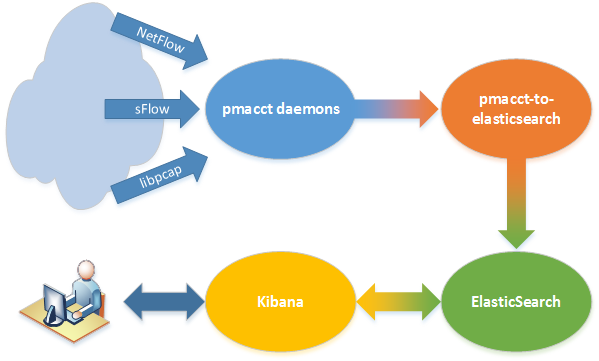In this post I want to show a solution based on a script (pmacct-to-elasticsearch) that I made to gather data from pmacct and visualize them using Kibana/ElasticSearch. It’s far from being the state of the art of IP accounting solutions, but it may be used as a starting point for further customizations and developments.
I plan to write another post with some ideas to integrate pmacct with the canonical ELK stack (ElasticSearch/Logstash/Kibana). As usual, add my RSS feed to your reader or follow me on Twitter to stay updated!
The big picture
This is the big picture of the proposed solution:

There are 4 main actors: pmacct daemons (we already saw how to install and configure them) that collect accounting data, pmacct-to-elasticsearch, which reads pmacct’s output, processes it and sends it to ElasticSearch, where data are stored and organized into indices and, at last, Kibana, that is used to chart them on a web frontend.
